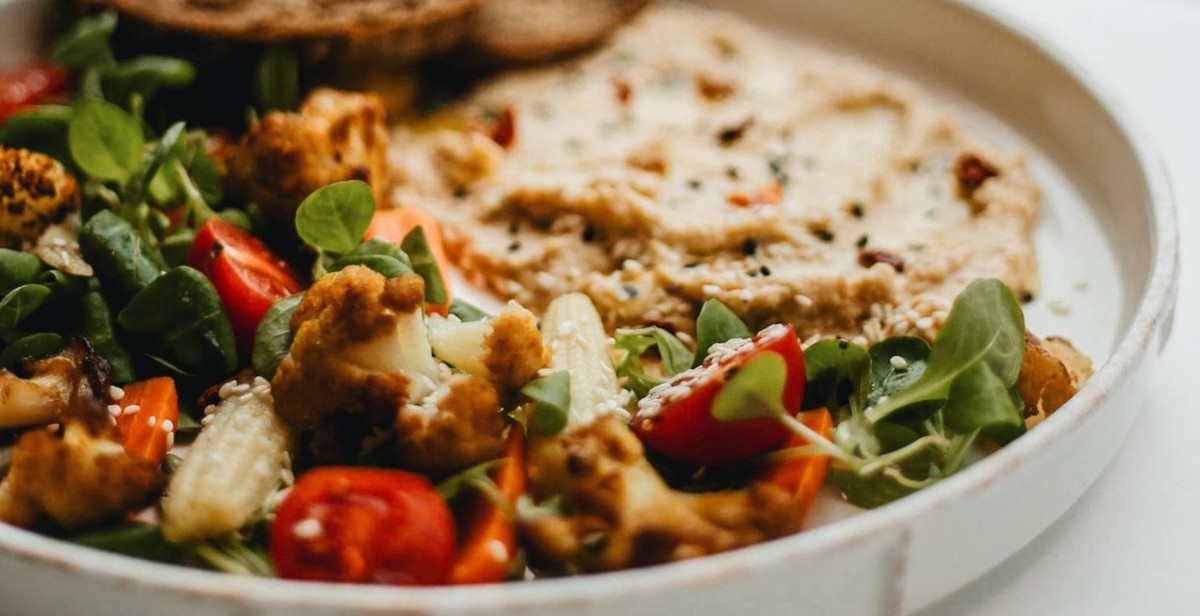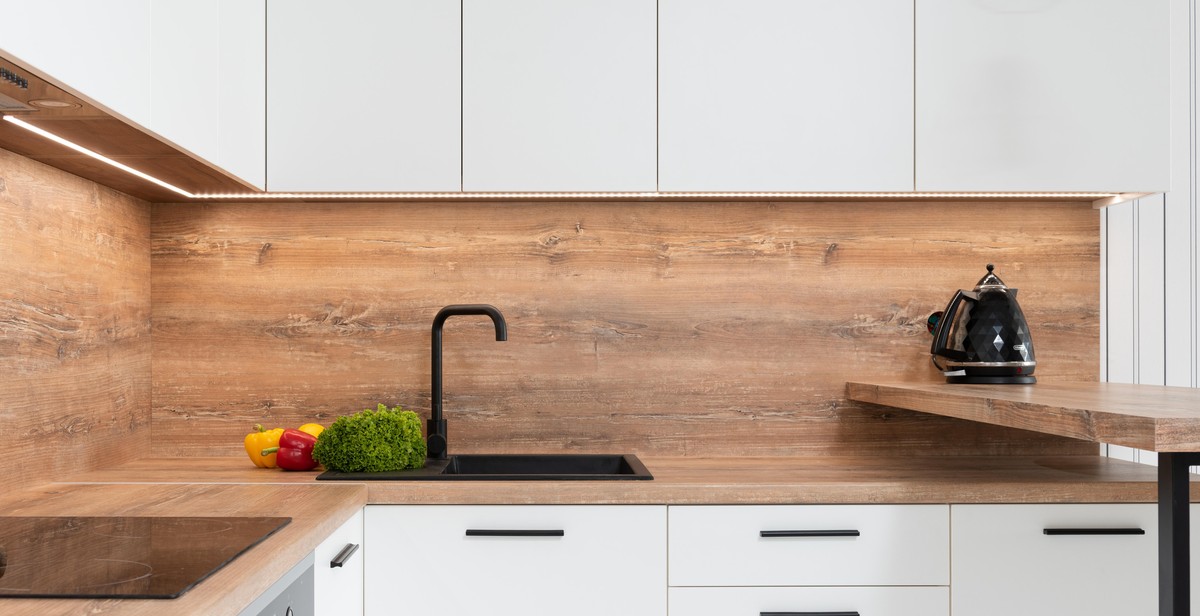How to Make Roasted Vegetables: Enhancing Flavors through Oven Cooking
Roasting vegetables is a simple and healthy way to bring out their natural flavors. Whether you are a vegetarian or just looking for a tasty side dish, roasted vegetables are a great option. Oven cooking allows you to enhance the flavors of the vegetables and create a delicious and nutritious meal.
Benefits of Roasting Vegetables
Roasting vegetables is a great way to retain their nutrients, as it requires less oil than frying or sautéing. The high heat of the oven caramelizes the natural sugars in the vegetables, creating a delicious, crispy exterior. Additionally, roasting vegetables is a versatile cooking method that can be used with a variety of vegetables, including root vegetables, cruciferous vegetables, and even fruits.
Ingredients and Equipment Required
To make roasted vegetables, you will need a few basic ingredients and equipment:
- Assorted vegetables (e.g. carrots, broccoli, cauliflower, sweet potatoes, etc.)
- Olive oil
- Salt and pepper
- Baking sheet or roasting pan
- Parchment paper (optional)
- Knife and cutting board
Steps to Make Roasted Vegetables
Follow these simple steps to make perfectly roasted vegetables:
- Preheat your oven to 400°F.
- Wash and chop your vegetables into bite-sized pieces.
- Place the vegetables on a baking sheet or roasting pan and drizzle with olive oil.
- Season with salt and pepper.
- Roast in the oven for 20-30 minutes, or until the vegetables are tender and crispy.
- Remove from the oven and serve hot.
With these simple steps, you can create a delicious and healthy side dish or main course. Roasted vegetables are perfect for meal prep, as they can be stored in the refrigerator for several days and reheated as needed. Try experimenting with different vegetables and seasonings to find your favorite flavor combinations.
Why Roasting Vegetables is a Great Way to Enhance Flavors
Roasting vegetables is a great way to enhance their natural flavors and textures. This cooking technique involves cooking vegetables in the oven at high temperatures, which caramelizes the natural sugars in the vegetables and creates a crispy, golden exterior. The result is a delicious and nutritious dish that is perfect as a side dish or as a main course.
Retains Nutrients
Roasting vegetables also helps to retain their nutrients. Unlike boiling or steaming, which can leach out important vitamins and minerals, roasting vegetables allows them to retain their nutritional value. This is because the high heat of the oven helps to break down the cell walls of the vegetables, making it easier for our bodies to absorb the nutrients.
Easy and Versatile
Roasting vegetables is also incredibly easy and versatile. You can use any type of vegetable that you like, from carrots and potatoes to broccoli and cauliflower. Simply toss the vegetables in olive oil, season with salt and pepper, and roast in the oven until tender and golden brown. You can also experiment with different herbs and spices to add even more flavor to your roasted vegetables.
Enhances Flavors
Perhaps the biggest benefit of roasting vegetables is that it enhances their natural flavors. As the vegetables cook, their natural sugars caramelize and create a delicious, rich flavor that is hard to beat. This is especially true for vegetables like sweet potatoes, carrots, and onions, which are naturally sweet and become even sweeter when roasted.
If you want to enhance the flavors of your vegetables and create a delicious and nutritious dish, roasting is definitely the way to go. Not only is it easy and versatile, but it also helps to retain the nutrients of the vegetables while creating a dish that is bursting with flavor.

Choosing the Right Vegetables to Roast
Roasting is a great way to enhance the natural flavors of vegetables. However, not all vegetables are created equal when it comes to roasting. Some vegetables work better than others, depending on their texture, flavor, and cooking time. Here are some of the best vegetables to roast:
Root Vegetables
Root vegetables are perfect for roasting because they have a dense texture that holds up well in the oven. Some of the best root vegetables to roast include carrots, parsnips, turnips, beets, and potatoes. These vegetables are also very versatile and can be seasoned with a variety of herbs and spices.
Cruciferous Vegetables
Cruciferous vegetables, such as broccoli, cauliflower, and Brussels sprouts, are also great for roasting. These vegetables have a slightly bitter taste that is enhanced by roasting. They also have a firm texture that holds up well in the oven.
Squash and Sweet Potatoes
Squash and sweet potatoes are perfect for roasting because they have a natural sweetness that is enhanced by the caramelization process in the oven. Some of the best squash and sweet potatoes to roast include butternut squash, acorn squash, and sweet potatoes.
Other Vegetables
Other vegetables that can be roasted include onions, peppers, and mushrooms. These vegetables have a softer texture than root vegetables and cruciferous vegetables, so they may cook faster. However, they have a great flavor that is enhanced by roasting.
| Best Vegetables for Roasting | Texture | Flavor |
|---|---|---|
| Root Vegetables | Dense | Versatile |
| Cruciferous Vegetables | Firm | Slightly Bitter |
| Squash and Sweet Potatoes | Soft | Natural Sweetness |
| Other Vegetables | Soft | Great Flavor |
When choosing vegetables to roast, it’s important to consider their texture and flavor. Root vegetables, cruciferous vegetables, squash and sweet potatoes, and other vegetables are all great options for roasting. Experiment with different vegetables and seasonings to find your favorite combination.

Preparing Vegetables for Roasting
Roasting vegetables is a great way to enhance their natural flavors and create a delicious and healthy side dish. However, before you start roasting, it’s important to properly prepare your vegetables to ensure they cook evenly and taste great.
Cleaning and Cutting Vegetables
The first step in preparing vegetables for roasting is to clean them thoroughly. Rinse the vegetables under cold water and scrub them gently with a vegetable brush to remove any dirt or debris. For vegetables with tough skins, such as potatoes or carrots, you may also want to peel them before roasting.
Next, it’s important to cut the vegetables into uniform pieces to ensure they cook evenly. Aim for pieces that are roughly the same size and shape, around 1-2 inches in diameter. This will help prevent some pieces from overcooking while others are still underdone.
Coating Vegetables with Oil and Seasoning
Once your vegetables are clean and cut, it’s time to add flavor. Start by tossing them with a high-heat oil, such as olive oil or avocado oil, to help them crisp up in the oven. Use about 1-2 tablespoons of oil per pound of vegetables, and make sure each piece is coated evenly.
Next, add your desired seasonings. Salt and pepper are a great starting point, but you can also experiment with different herbs and spices to create a unique flavor profile. Try rosemary and thyme for a classic combination, or cumin and chili powder for a more savory dish.
Once your vegetables are coated in oil and seasoning, spread them out in a single layer on a baking sheet. Make sure there is plenty of space between each piece to allow for even cooking.
With your vegetables properly prepared, you’re ready to start roasting! Follow your recipe’s instructions for oven temperature and cooking time, and enjoy the delicious flavors of your perfectly roasted vegetables.

How to Roast Vegetables in the Oven
Roasting vegetables in the oven is one of the easiest and most flavorful ways to prepare them. Here are some tips to make sure your roasted vegetables come out perfectly every time.
Choosing the Right Temperature and Time
The temperature and time you roast your vegetables at will depend on the type of vegetable and how thickly it is sliced. Generally, vegetables should be roasted at a temperature of 400-425°F for 20-30 minutes. However, denser vegetables like potatoes and beets may need to be roasted for up to 45 minutes.
Using Different Roasting Techniques
There are several roasting techniques you can use to enhance the flavor of your vegetables. One popular method is to toss the vegetables in oil and seasonings before roasting. Another technique is to roast the vegetables on a bed of herbs or garlic for added flavor.
Making Sure Vegetables are Cooked to Perfection
To ensure your vegetables are cooked to perfection, make sure they are evenly sliced and spaced out on the baking sheet. Check on the vegetables periodically while they are roasting to make sure they are not burning. You can also test for doneness by piercing the vegetables with a fork. If they are tender and easily pierced, they are ready to be taken out of the oven.
| Vegetable | Temperature | Time |
|---|---|---|
| Asparagus | 400°F | 10-15 minutes |
| Broccoli | 425°F | 20-25 minutes |
| Carrots | 400°F | 20-25 minutes |
| Cauliflower | 425°F | 20-25 minutes |
| Potatoes | 400°F | 35-45 minutes |

Flavoring Your Roasted Vegetables
Roasted vegetables are a delicious and healthy side dish that can be customized to suit any taste. Here are some tips for enhancing the flavors of your roasted vegetables:
Choosing the Right Herbs and Spices
Herbs and spices are a great way to add flavor to roasted vegetables. Some popular options include:
- Rosemary
- Thyme
- Oregano
- Basil
- Paprika
- Cumin
When choosing herbs and spices, consider the flavor profile of the vegetables you are roasting. For example, rosemary pairs well with potatoes and carrots, while oregano works well with tomatoes and zucchini.
Adding Cheese and Other Toppings
Cheese and other toppings can also add flavor to roasted vegetables. Some options to try include:
- Parmesan cheese
- Feta cheese
- Crumbled bacon
- Toasted nuts
- Dried cranberries
Be careful not to add too many toppings, as this can overpower the flavor of the vegetables.
Using Acid to Balance Flavors
Acidic ingredients like vinegar and lemon juice can help balance the flavors of roasted vegetables. Try adding a splash of balsamic vinegar or a squeeze of lemon juice to your vegetables before roasting.
Remember to experiment with different flavor combinations to find what works best for you. With these tips, you can create delicious and flavorful roasted vegetables every time.
Conclusion
Roasted vegetables are a healthy and delicious addition to any meal. By using the oven to cook them, you can enhance their flavors and create a variety of textures that will keep your taste buds satisfied. Whether you are a seasoned cook or a novice in the kitchen, roasting vegetables is a simple and easy way to create a tasty side dish or main course.
Tips for Perfect Roasted Vegetables
- Choose fresh, high-quality vegetables for the best flavor and texture.
- Cut your vegetables into uniform sizes to ensure even cooking.
- Use a high temperature (around 400-425°F) to encourage browning and crispiness.
- Don’t overcrowd your baking sheet or pan, as this can lead to steaming instead of roasting.
- Experiment with different herbs, spices, and seasonings to find your favorite flavor combinations.
Final Thoughts
Roasting vegetables is a versatile cooking technique that can be used with a wide variety of veggies. By following a few simple tips and tricks, you can create perfectly roasted vegetables that are bursting with flavor and nutrition. So why not give it a try and see how easy it is to enhance the taste of your favorite vegetables?
| Pros | Cons |
|---|---|
| Roasting vegetables is a healthy cooking method that preserves nutrients and enhances flavor. | Some vegetables may take longer to roast than others, so it’s important to keep an eye on them to prevent burning. |
| Roasted vegetables are versatile and can be served as a side dish or incorporated into a main course. | Roasting can be time-consuming, especially if you are cooking a large quantity of vegetables. |
| Roasting vegetables is a great way to use up leftover produce and reduce food waste. | Roasting vegetables can be messy, as they can release juices and oils that can splatter in the oven. |
